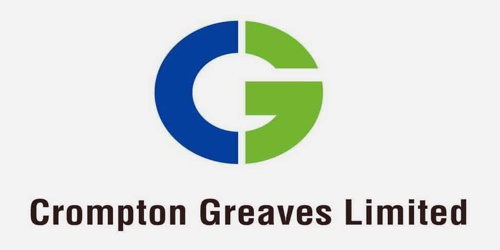Introduction:
By achieving practical knowledge it is possible to apply the theoretical knowledge in the practical field. The industrial attachment is the most effective process of achieving practical experience. University education provides us vast theoretical knowledge as well more practical knowledge, despite of all these Industrial Attachment helps us to be familiar with technical support of modern technology, suitability about various processing/ operation stages.
We have prepared this report according to the guideline given by the DaffodilInternationalUniversity authority and a huge support in Zaheen knitwear & Jamaluddin textile (pvt) Ltd. We think this is more important for our future career.
Zaheen Knitwear & Jamaluddin Textile (Pvt.) Ltd.
Keodala, Madanpur, Bandar,
Narayanganj.
Factory profile:
FACTORY | Keodala, Madanpur, Bandar, Narayanganj. Tel: +880-2-7647748-9, Fax: +880-2-7647749 E-mail: zaheenknit@gmail.com
|
CORPORATE OFFICE | 28, Dilkhusha C/A (11th & 19th Floor), Motijheel, Dhaka-1000, Bangladesh Tel: +880-2-9551127, 9557334, 9571641, 9551636, Fax: +880-2-9564075 E-mail: mjamal@msnbd.net zkl@msnbd.net Website: www.jamaluddingroup.com
|
| NATURE OF THE COMPANY | 100% Export Oriented Knit garments and Woven Fabric Manufacturer. |
| STYLE OF THE COMPANY | Private Limited Company |
|
BUSINESS AREAS | Zaheen Knitwears & Jamaluddin Textile (Pvt.) Limited Coating of Industrial cylinders Yarn Sizing, Weaving Knitting, Dyeing & Garments, Printing |
| Bank Relation | Islami Bank Bangladesh Limited Foreign Exchange Corporate Branch 41, Dilkusha C/A, Dhaka-1000, Bangladesh. Swift Code: IBBLBDDHX109 |
| LAND AND BUILDING | 10 Acres of Land 200, 000 Sqft Floor space |
| YEAR OF ESTABLISHMENT | Jamaluddin Textile (Pvt.) Ltd. (1994) Zaheen Knitwears Ltd. (2007) |
| NUMBER OF EMPLOYEES | 1150 |
|
PRODUCTION CATEGORY (ITEM) | Single Jersey, Heavy Jersey, Pique, Interlock, Rib, pleated design rib, French terry, Fleece, Collar & cuff made of Cotton, viscose, Modal, cotton viscose, cotton modal, Polyester viscose, viloft, Polyester, cotton polyester, Synthetic fiber & micro fiber, x-static and also made of Polyamide, etc. by DuPont. T-shirt, Polo shirt, Sweat-shirt, Golf-shirt, Tank tops, Children wear, Jogging suits, Runners pant, Functional wear, Fashion dresses, Under garments, Sports wear etc .
|
| MRKET | USA, European Countries, Canada, Australia. |
| BUYER | Modes, Norwest, Celox, Newworker, Stainbury, Oodji, Best & Less, Junker, Paris, Matalan, |
| OUR ASSOCIATION’S: | FBCCI, BTMA, DCCI, BKMEA |
Factory location layout:
Here the knitting unit is being operated in a floor space of 9100 Sqft and total manpower engaged for running the unit is 45.Total machine= 22( Single Jersey = 11, Rib/Interlock = 5, Flatbed/ coller m/c =6).The specification of the machines are given bellow:
Machine no-01
M/C name: Single jersey
Brand: Pai lung knitting m/c
Origin: Taiwan
Model: PL- X5 3B/A/CE
M/c dia: 18”
Feeder: 54
Needle: 1356
Machine no-02
M/C name: Single jersey
Brand: Pai lung knitting m/c knitting m/c
Origin: Taiwan
M/c dia: 20”
Model: PL- X5 3B/A/CE
Feeder: 60
Needle: 1500
Machine no-03
M/C name: Rib, 2/1
Brand: Pai lung knitting m/c knitting m/c
Origin: Taiwan
Model: PL- XR 2B/A/CE
M/c dia: 32”
Feeder: 64
Needle: 2400
Machine no-04
M/C name: Rib
Brand: Pai lung knitting m/c knitting m/c
Origin: Taiwan
Model: PL- XR 2B/A/CE
M/c dia: 36”
Feeder: 72
Needle: 2712
Machine no-05
M/C name: Rib
Brand: Pai lung knitting m/c knitting m/c
Origin: Taiwan
Model: PL- XR 2B/A/CE
M/c dia: 38”
Feeder: 76
Needle: 2856
Machine no-06
M/C name: Rib
Brand: Pai lung knitting m/c knitting m/c
Origin: Taiwan
Model: PL- XR 2B/A/CE
M/c dia: 40”
Feeder: 80
Needle: 3000
Machine no-07
M/C name: Rib
Brand: Pai lung knitting m/c knitting m/c
Origin: Taiwan
Model: PL- XB 2B/CE
M/c dia: 42”
Feeder: 84
Needle: 3168
Machine no-08
M/C name: Single jersey
Brand: Pai lung knitting m/c knitting m/c
Origin: Taiwan
Model: PL- XS 3B/A/CF
M/c dia: 38”
Feeder: 11
Needle: 2856
Machine no-09
M/C name: Single jersey
Brand: Pai lung knitting m/c knitting m/c
Origin: Taiwan
Model: PL- X5 3B/A/CE
M/c dia: 36”
Feeder: 108
Needle: 2712
Machine no-10
M/C name: Single jersey
Brand: Pai lung knitting m/c knitting m/c
Origin: Taiwan
Model: PL- X5 3B/A/CE
M/c dia: 34”
Feeder: 102
Needle: 2544
Machine no-11
M/C name: Single jersey
Brand: Pai lung knitting m/c knitting m/c
Origin: Taiwan
Model: PL- XS 3B/A/CE
M/c dia: 32”
Feeder: 96
Needle: 2400
Machine no-12
M/C name: Single jersey
Brand: Pai lung knitting m/c knitting m/c
Origin: Taiwan
Model: PL- XS 3B/A/CE
M/c dia: 30”
Feeder: 90
Needle: 2256
Machine no-13
M/C name: Single jersey
Brand: Pai lung knitting m/c knitting m/c
Origin: Taiwan
Model: PL- X5 3B/A/CE
M/c dia: 28”
Feeder: 84
Needle: 2112
Machine no-14
M/C name: Single jersey
Brand: Pai lung knitting m/c knitting m/c
Origin: Taiwan
Model: PL- X5 3B/A/CE
M/c dia: 26”
Feeder: 78
Needle: 1912
Machine no-15
M/C name: Single jersey
Brand: Pai lung knitting m/c knitting m/c
Origin: Taiwan
Model: PL- X5 3B/A/CE
M/c dia: 24”
Feeder: 72
Needle: 1800
Machine no-16
M/C name: Single jersey
Brand: Pai lung knitting m/c knitting m/c
Origin: Taiwan
Model: PL- X5 3B/A/CE
M/c dia: 22”
Feeder: 66
Needle: 1656
Machine no-17
M/C name: Single jersey
Brand: Pai lung knitting m/c knitting m/c
Origin: Taiwan
Model: PL- X5 3B/A/CE
M/c dia: 40”
Feeder: 120
Needle: 3000
Number of flatbed/coller m/c = 6
Brand: KAUO HENG
Origin: Taiwan
M/C bed: 54”
Power: 220v, 50 Hz
Key Accessories for knitting :
Key Accessories used for circular knitting fabric process which are:
-Cylinder
-CAM
-Needle
-Sinker
-MPF positive feed system
-Motor
-Inventor
-Belt
-VDQ quality pulley
-Pattern wheel
Production calculation:
Production/shift in kg at 100% efficiency:
RPM * no of feeder * no of needle * SL (mm)
3527.80 * yarn count
Fault in knit fabric:
A defect of the knitted fabric is an abnormality which spoils the aesthetics i.e. the clean & uniform appearance of the fabric & effects the performance parameters, like; dimensional stability etc.
There are various types of defects which occur in the Knitted fabrics of all types caused by a variety of reasons. The same type of defects may occur in the fabric due to a variety of different causes e.g. Drop Stitches, Spirality,Horizontal lines, broken needle, pinhole,Contamination etc.
Some faults found in knitting section are given bellow:
1. Drop Stitches (Holes): Drop Stitches are randomly appearing small or big holes of the same or different size which appear as defects in the Knitted fabrics.
Causes: High yarn tension, high fabric take down, incorrect gap between the Dial & Cylinder.
Remedies: Ensure uniform yarn tension with a Tension Meter, yarn feed should be controlled; the gap between the Cylinder & the Dial should be correctly adjusted.
2. Oil Stains:
Oil stains appear as spots or grease oil or dyes of different color, in a neat & clean finished fabric surface.
Causes: Grease & Oil stains from the moving machine parts like; Gears Shafts Driving Pulleys &wheels etc, Machine not cleaned thoroughly, Fabric touching the floors during transportation.
Remedies:All the lubricated moving machine parts should be protected with safety guards, Wash & clean the machine thoroughly, Handle the fabric carefully with clean hands.
3. Pin Hole: A small pin hole show in fabric
Causes: Due to break down or bend of latch, pin hole may come in the fabric.
Remedies: Change the needle.
4. Broken Needles/ Laddering: The broken needles show vertical lines parallel to the Wales. There are no loops formed in the Wale which has a broken needle.
Causes: High yarn tension, bad setting of the yarn feeders, old & worn out needle set, breakage of hook or butt in needle.
Remedies: Ensure uniform & the right yarn tension, keep the recommended gap between the yarn feeders & the needles., replace defective needle.
5. Contaminations: Contaminations appear in the form of foreign matter such as; dyed fibers, husk, dead fibers etc. in the staple spun yarn.
Causes: Presence of dead fibers & other foreign materials.
Remedies: Prevent the fibers flying from the neighboring machines with plastic curtains or mosquito nets.
6. Barre: A fault in weft knitted fabric appearing as light or dark course wise (width
wise) Stripe.
Causes:
This fault comes from yarn fault, If different micro near value of fiber content in yarn, Different lustier, dye affinity of fiber content in yarn, In draw fame different similar classes sliver is mixed and make one sliver.
Remedies:
We can use this fabric in white color.
Batch Preparation:
Batch preparation can be defined as a process where the visually Inspected greige fabric are divided into different batches. It is a part of dyeing process & it is done to feed the dyeing machines for fabric dyeing. It is very important to make a batch with maintaining a correct length of each nozzle.
Objective of Batching:
1. To receive the grey fabric roll from knitting section or other source.
2. Turn the grey fabric if require.
3. To prepare the batch of fabric for dyeing according to the following criteria –
4. Order sheet (Received from buyer).
5. Dyeing shade (color or white, light or dark).
6. Machine capacity.
7. Machine available.
8. Type of fabrics (100% cotton, PE, PC, CVC).
9. Emergency.
10. To send the grey fabric to the dyeing floor with batch card.
11. To keep records for every previous dyeing.
Proper Batching Criteria:
1. To use maximum capacity of existing dyeing machine.
2. To minimize the washing time or preparation time & machine stoppage time.
3. To keep the number of batch as less as possible for same shade.
4. To use a particular machine for dyeing same shade.
List of the Machine in Batch Preparation:
Name of the Machine
Manufacturer Model Specification
Quantity
Grey fabric
Reversing m/c
CANLAR
Turkey
HMS-FB Capacity=10tons/24hours 01
~ 24 ~
Machine Set-up:
Machine set-up is not applicable for batch preparation process. To start/stop operation, the
machine is switched on or off.
Checklist before Operation:
a) Check order no. & customers name of the batch/job card
b) Check types, quality,quantity,& other specification on the batch/job card
c) Check fabric & yarn quality & quantity while receiving goods from inspection
d) Availability of required manpower
e) Availability of key accessories & other required materials
f) Availability of power
g) Check machine wise production plan to set priority
Operation Procedure:
_ Check production plan to set the priority
_ Consult with previous shift stuff to get the required information about the batches
_ Check batch card & job card specification(e.g.-Yarn type,quality,weight etc) for
Fabric & collars/cuffs respectively
_ Calculate number of batches, nozzles & rolls to be prepared for each order & specify on
The batch & job card. One should be very careful while calculating & entering such data
On these cards.
_ Feed the fabric into the turning m/c
_ Start batching operation & check the following information-
_ Machine no.
_ Number of nozzle to be prepared.
_ Order no.
_ Customer number.
_ GSM.
_ Width.
_ Lot no.
_ Turning required or not.
_ Special instruction (if any).
~ 25 ~
_ Prepare the body fabric of specified weight. This weight must be accurate & each nozzle
of same batch must weight equal to ensure even dyeing.
_ Calculate the number of collar/cuffs & attach the collars& cuffs with the body fabric.
_ Write down the weight of each roll on the back of batch card.
_ Check hole mark in each roll for identification.
_ Turn the roll(if required).
_ Calculate the total weight very carefully & write it down in the specific area of the
batch card.
_ After completation of one batch, write “OK” as comments at the notes section of batch
card & send the batch along with the card to the dyeing section.
Special instruction (if any) is followed
Pre-treatment:
Composition Of Cotton:
Particles Percentage
Cellulose 85.5%
Moisture 8.5%
Fax/Waxes 0.45%-1.0%
Mineral Substance 0.7%-1%
Pectins 0.7%-1.2%
Proteins 1.1%-1.9%
Various Organic Compound 0.5%-1.0%
Scouring:
Greige fabric contain fax, waxes, and other impurities. The absorbance of the fabric is adversely
effected due to the presence of these impurities. This leads to improper dyeing, printing and
finishing in the subsequent process. These impurities are removed from the fabric by a chemical
treatment. This chemical treatment is called scouring process.
Bleaching:
Bleaching is a process for removing natural nitrogenous coloring matters e.g.- dirt,dust,husk,broken
seed, leaf etc from the fabric and make it white by oxidizing or chemical treatment.
Purpose of Bleaching:
_ To remove all the natural coloring materials.
_ To impart adequate whiteness to the fabric.
_ It changes the textile materials which are hydrophobic in nature.
~ 28 ~
_ It increases the dye absorbtion ability of the textile materials.
_ It helps to produce an even shade during dyeing operation.
Washing:
Washing is a process to remove waxes, fats or to increase absorbency of the fabric by chemical
treatment. Washing process is specially used only for T/C and TTC dark color shades.
Key Accessories:
Key accessories used in pre-treatment process are:
_ Mixing Tank
_ Machine Tank
_ PH Meter
_ Eye protecting glass
_ Hand gloves
_ Sewing Machine
_ Gum boot
_ Hand lifter for carrying the batch
Materials/Chemicals used:
· Water
· Steam
· Compressed Air
· Caustic Soda
· Hydrogen per Oxide
· Stabilizer(e.g.-Stabilol P, Stabilizer Sifa)
· Wetting Agent(e.g.-Foryl SF,Feloson No F)
· Detergent(e.g.-Sandoclean PC)
· Sequestering Agent(Secron 540)
~ 29 ~
· Acid(Acetic Acid)
· Antri-Creasing Agent(Cibafluid C,Primasol Jet)
· Hydrogen per Oxide killer(Bactasol AP)
· Enzyme for neps dead cotton (Bactasol Machine specification:
There are 13 machine are used for dyeing.
1, 2, 3, Machine name: Sample dyeing machine
Model: FC-L8-AD
Nozzle: 1
Capacity: 250 kg
4. Machine name: dyeing machine.
Brand name: fong’s
Model: FC-28-AD
Origin:China
Nozzle: 2
Capacity: 400 kg
5. Machine name: dyeing machine.
Brand name: fong’s
Model: EOO-38-T
Origin:China
Nozzle: 1
Capacity: 200kg
6. Machine specification: dyeing machine.
Brand name: fong’s
Model: EOO-38-2T
Origin: China
Nozzle: 2Capacity: 400kg
7. Machine specification: dyeing machine.
Brand name: fong’s
Model: EOO-38-3T
Origin:China
Nozzle: 3
Capacity: 600kg
8. Machine specification: dyeing machine.
Brand name: fong’s
Model: EOO-38-4T
Origin:China
Nozzle: 4
Capacity: 1000kg
9. Machine specification: dyeing machine.
Brand name: fong’s
Model: EOO-38-3T
Origin: China
Nozzle: 3
Capacity: 750kg
10. Machine specification: dyeing machine.
Brand name: fong’s
Model: EOO-38-2
Origin:China
Nozzle: 2
Capacity: 300kg
Production sequence of garments production:
Design/Sketch
Sample making
Production pattern
Lay planning
Fabric spreading
Cutting
Numbering
Printing
Sewing
Finishing
Final inspection
Pattern & sample section:
Pattern: At first pattern make with the help of buyer given order sheet. In this factory no CAD (Computer Aided Design) software used, two types of allowance are used such sewing (chest 1.5cm, bottom 1 cm) and shrinkage (2cm/2.5cm depend on fabric).
Sample: Different types of samples are: Fit/style sample, PP sample (Pre-production sample), Shipping sample, photo sample, Final sample, Side set sample, etc.
M/c used in pattern & sample section:
Total m/c= 12
1. Brother Plain m/c
Model: CISM 22098
Origin: Chaina
Number of m/c = 4
2. Pegasus Flat lock m/c
Model: 0367742
Origin: Chaina
Number of m/c = 3
3. Pegasus Flat lock Rib/Piping m/c
Model: 1500 N
Origin: Chaina
Number of m/c = 1
4. Pegasus Over lock m/c
Model: M 800
Origin: Chaina
Number of m/c = 3
5. Zusun ilet m/c
Model: CM 818
Origin: Chaina
Number of m/c = 1
Cutting section:
In this factory no marker paper use, they used pattern direct on the fabric for marking then cut the fabric. After cutting, the cut pieces are numbered by numbering m/c.
Process sequence of cutting room:
Fabric Spreading
↓
Fabric Cutting
↓
Numbering
↓
100% checking & Parts Replacing if needed.
↓
Shorting & Bundling
↓
Sewing/Assembling
Fabric spreading: Before fabric laying a thin paper as like as marker that is marker size and thin paper size is same, then thin paper attach with spreading table by gum tape then spread the fabric according to marker size.
Fabric cutting: Fabric lay is cut ting by straight knife cutting machine then separated cutting part.
Numbering: In this stage sticker is attached with all part of cutting part for shade matching. The sticker number maintains cutting number, size number, serial number.
M/c used in cutting section:
1. Fabric cutting m/c
Brand: Mack
Model: KS-AU V
Origin: Japan
Volts: 220v, 50/60 Hz
Number of m/c = 2 (One 8” & another 10”)
2. Numbering m/c:
Brand: BLITZ
Model: 2253
Origin: Italy patented
Number of m/c = 4
Cutting requires skilled employees because failure to properly cut the fabric could result in quality problems with fit and assembly. Some faults are found in cutting section, such as:
Wrong cutting: When miss the quantity of cutting pieces this types of fault are found. Such as need 80 pieces of ply but cut 70 pieces.
Causes: Wrong spreading or ply, Cutting fabric quickly.
Remedies: Fabric spreading properly should be alert during cutting.
Miss cut: If any angle is missed or wrong angle cutting during fabric cutting then miss cut is occurred.
Causes: problem in machine blade, lack of concentration of operator.
Remedies: Change the defective blade, should be careful during cutting.
Numbering mistake: Number of cut pieces are not attached or mistake the number are known as numbering mistake.
Causes:Defective machine, lack of skilled operator.
Remedies: Remove the number sticker from cut pieces and again attached correctly.
Printing section:
Printing is a important area in garments section, different types of print are discharge color, screen print, rubber print, pigment print, plastic print, foil print, regret print, radium print, puff print etc.
Chemical used in printing: Here they have used above 90 types of color & pasting material some of them are: Binder 38, Nylon clear, M. S.-30, Foil paste TR 220, Npp 300c clear, Npp 300w white, N.T foil, softener, ammonia, Rubber gel, Flock powder red, Oxol R conc, Modi gum, New puff.
M/c used in printing: In this section 10 machine are used (Auto run dryer= 6, Quring heat m/c= 1, Heat press m/c: =3).
Printing line: 6(Glass table)
Origin: Chaina
1 Auto run Dryer m/c:
Brand: DELIXI
Model: DZ 47-63
Origin: Chaina
Volts: 400v, 50 Hz
The m/c contains electric heater and 8 hot fans.
Fig: Auto run dryer
Number of m/c = 6
2. Quring heat m/c:
Brand: Suzhoun Yihui
Type: Electric
Used: Finishing dry.
Number of m/c
3. Heat press m/c:
Brand: CNYH
Model: DZ 47-63
Origin: Chaina
Number of m/c = 3
Fault in printing section: Some common fault found in this section are: color problem, shade problem, Incorrect printing measurement, Discolor after wash, style mixing,
If the printed pieces fail in azo test then the printed product considered as reject.
Sewing section:
Sewing section is more important section from other section. It is a main section in Garments production. Here Garments unit is being operated in a floor space of 60000 Sqft and total manpower engaged for running the unit is 450. Currently they have 13 sewing lines with oil-free dry head machine with the capacity of 350000 – 400000 pcs in a month. They have latest models of Sewing machines (Brother and Pegasus) from world class manufacturers having added features.
Process sequence of sewing section( T-shirt):
Matching back & front part
Sewing the shoulder
Neck stitch
Neck piping
Tuck
Back top seam with main label attached
Neck top seam
Sleeve hem
Sleeve join
Side seam with care label
QC table
M/c used in sewing section:
1. Plain m/c:
Brand: Brother
Model: SL-7340-3
Origin: Chaina
No. of m/c: 64
2. Auto plain m/c
Brand: Brother
Model: S. 6200 A 403
Origin: Chaina
No. of m/c: 54
3. Four thread over lock m/c:
Brand: Pegasus
Model: M. 752
Origin: Chaina
No. of m/c: 28
4. Four thread over lock m/c:
Brand: Pegasus
Model: M. 852-13
Origin: Chaina
No. of m/c: 59
5. Cylinder bed flat locks m/c:
Brand: Pegasus
Model: W- 1662- IG
Origin: Chaina
No. of m/c: 32
6. F. set flat lock m/c:
Brand: Pegasus
Model: W.1562N-02G
Origin: Chaina
No. of m/c: 34
7. Button hole m/c:
Brand: Brother
Model: HE- 800A
Origin: Chaina
No. of m/c: 2
8. Button Stitch m/c:
Brand: Brother
Model: BE- 430D-01
Origin: Chaina
No. of m/c: 2
9. Barteck m/c:
Brand: Brother
Model: KE-430D-01
Origin: Chaina
No. of m/c: 3
10. Feed of the Arm m/c:
Brand: Brother
Model: DA- 9270-01
Origin: Chaina
No. of m/c: 6
11. Smoking m/c:
Brand: Kansai
Model: BX 1425PSSM-ET
Origin: Japan
No. of m/c: 1
Quality check in sewing section: After sewing the garments send to QC table, where they are inspected quality. They check Main, care and size label, oil mark, broken stitch, skip stitch, raw edge problem, alter problem, they also cut the extra thread from garments.
Some common problem faced in sewing section and their remedies are giving bellow:
1. Skipped Stitch: If the gap of stitch or miss stitches formation then the fault called skipped stitch.
Causes: Failure of needle to enter loop at correct time, Needle deflection or bent needle, Incorrect sewing tension in the needle thread.
Remedies: Check needles are inserted, replace the defective needle, re adjust the thread tension re adjust presser foot pressure
2. Oil mark: When the spot of oil and wax are found on the garments surface then its called oil mark.
Causes: During sewing process if oil and wax are deposit from the machine to the fabric surface then oil mark is occurred.
Remedies: Oil mark is removed from the fabric by a special type of spray named ‘Spot lifter’. First its spray on the spot and then air blown on the spot by a machine named ‘spot cleaning machine’.
3. Broken Stitch: If any stitch is broken after sewing then it known as broken stitch.
Cause: This type of fault is occurred because of low quality thread, high thread tension.
Remedies: To avoid this fault use good quality of thread, seam area are opened and again sewing correctly.
4. Seam Pucker: After sewing when the fabric is puckered in the seam area then it called seam pucker.
Causes: Incorrect tension setting, fabric feed Extension in sewing thread.
Remedies: Check tension level in the thread, Sew with minimum tension possible.
5. Main label displaced from center: Mistake position of label is known as label displace.
Causes: For the lack of experience or concentration of worker
.Remedies: Label is removed and placed again in correct position and attach again.
6. Raw edge problem: If unexpected parts are shown in the garments from sewing area then this problem is occurred.
Causes: For the lack of experience or concentration of worker.
Remedies: The unexpected part is cut out precisely.
After checking the quality the garments send to the finishing section
Layout of Garments finishing section:
Finishing section: The finishing section is the final processing section of the garments industry where the finished garments are process to prepare for its final delivery. The finishing section work to inspect the product, remove all possible type of fault, add some additional material with the product as per buyer requirement and prepare the product for safe shipping.
Process sequence of finishing section:
Receive garments
↓
Ironing
↓
Measurement Table
↓
Final Checking Table
↓
Attaching Tag, Hang Tag
↓
Body Folding
↓
Packing with Board, Hanger and Polybag
↓
Shade matching section
↓
Cartooning
↓
Store
↓
Shipment
Machine Specification:
M/C name: Iron Machine
Brand: Silver star.
Model: BS-6 PC
Origin: China
M/C Number: 22
M/C name: Ironing table
Brand: Nisho
Model: NH-1290
Origin: China.
M/C Number: 22
M/C name: Thread Sucker
Brand: Nisho
Model: NH-TS5600A
Origin: China
M/C Number: 2
M/C Name: Needle Detector Machine.
Brand: Hasima.
Model:
Origin: Japan
M/C number: 1
M/C Name: Tag Attaching Machine
Brand: Kobe
Origin: Japan
M/C number: 30
M/C Name: Spot Cleaning Machine
Brand: Red Arrow
Model: YH-120
Origin: Taiwan
M/C Number: 4
M/C Name: Spot Lifting Machine.
Brand:
Model: NH-602AH
Origin: China.
M/C number: 2
Fault occur in finishing section and its remedies:
1. Ironing problem: Some ironing problem occurred are giving bellow most
Shoulder up down: During ironing if the shoulder side is not placed correctly
Causes: It is also the mistake of the worker.
Remedies: Shoulder placed correctly and ironing again.
2. Bottom up down: If top and bottom are not placed correctly
Causes: For the lack of experience or concentration of worker.
Remedies: Bottom and top placed correctly and ironing again.
3. Puckering: Crease if brought in the fabric and ironing.
Causes: For the lack of concentration of worker if he ironing the garment on the crease area.
Remedies: Remove the crease from the fabric and ironing again.
4 Side up down: Front side and back side if does not in correct position in the side seam.
Causes: It’s a mistake of worker
Remedies: Placed the front and back in correct position on side seam and ironing.
5. Poor folding resulting poor appearance: Due to poor folding the garments
Appearance looks odd or not appreciating.
Solution: The garments should fold properly according to buyers instruction.
6. Incorrect packing: The packing should do by following instruction from the buyer.
Solution:
The product has to pack properly
7. Size mistake:
Different size sign are used in garment and lock pin label
Causes:
It’s a mistake or lack of concentration of worker.
Solution:
Place the lock pin which size are shown in the product
8. Barcode problem:
If the main label and hang tag barcode are not similar.
Causes: It’s a mistake of worker.
Solution: Same barcode of main label and hang tag are placed
Quality Maintain in finishing section: This is the last stage before delivery the garments product so it has a lot of significance for the garments to make the product satisfactory to the buyer. Quality inspection is an important role for finishing section. This section work to give the clearance the garments for delivery or reject the product which is impossible to solve the fault.
Zaheen Knitwears & Jamaluddin Textile (Pvt.) Ltd has a big project and so of course having a vast project of utility service. Here the total accounts of utility facilities are available. The utilities area:
a) Water
b) Gas
c) Electricity
d) Steam(Boiler)
e) Compress air
Machine Specification:
6.1. Generator:
Brand name: CAT
Model: 2S-3230
Origin: USA
: 770 KW
: 1600 Am
No. of m/c: 1
6.2. Boiler:
Brand Name: Hurst
Model: 0700044
Max w.p. p.s.i : 150
Origin: USA
No. of m/c: 1
6.3. Compressor:
Brand name: KAESER
Model: TE-121
Origin: Germany
No. of m/c: 4
6.4. Effluent treatment plant (ETP):
Zaheen Knitwears & Jamaluddin Textile (Pvt.) Ltd has a large ETP, They used it properly and they do not create bad effect on Environment.
Chemical for ETP: 1. Lime
2. Farus
3. Polymer
Conclusion: Industrial training is an important and essential part of our education from which we have experienced practically of the industrial working environment and system. It gives us an opportunity to compare the theoretical knowledge with practical facts and thus develop our knowledge and skills. We got experience about the different section whose are working together to produce an export oriented garments. This industrial training experience gives us a crystal idea about the textile sector. It will help us to build our better career in the textile sector.
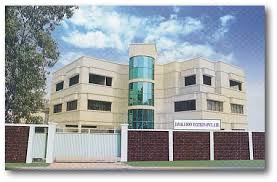

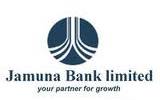
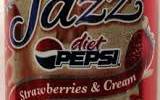

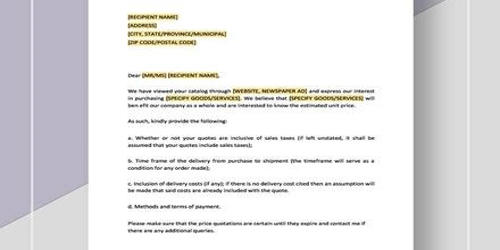
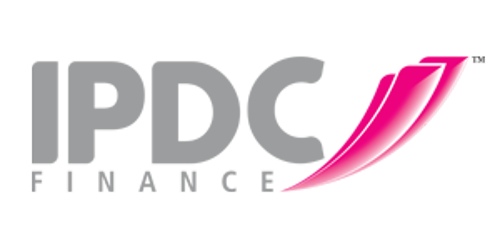

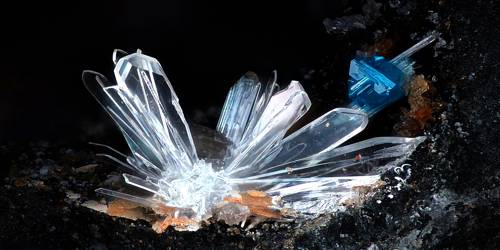
![Report on One Bank LTD [PART-2]](https://assignmentpoint.com/wp-content/uploads/2013/03/one-bank1-110x55.jpg)
